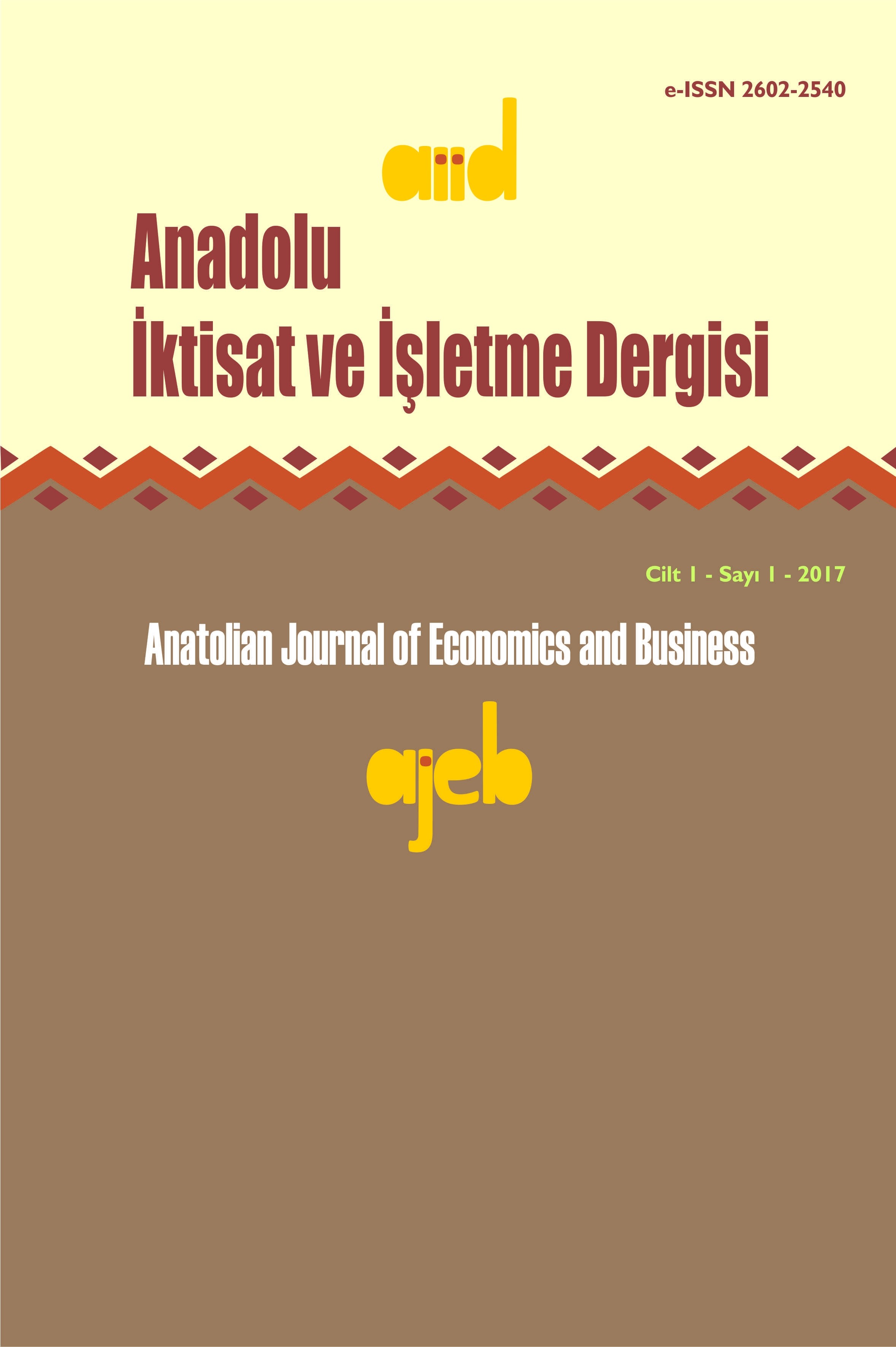The Impact of Regional Splitting and Local Taxes on Local Government Spending in Indonesia
This study aims to analyze the variables of regional splitting status, local taxes, GRDP, and population as determinants of local government spending in six regions in Indonesia. The analytical method used was panel data regression, with data obtained from the 2006-2017 research period. The results showed that the split local government spending is significantly greater than un-split local government in five regions. Furthermore, population and GRDP have a significant and positive effect on local government spending in all regions. Meanwhile, local taxes have a positive effect on local government spending only in four regions. Therefore, the government is expected to evaluate the implementation of regional splitting, create regulations, a conducive business climate, and maintain the population growth rate in all regions to properly maintain the increase in local government spending.
Anahtar Kelimeler:
Local Government Spending, Regional Splitting, Tax Revenue, Population
Keywords:
Local Government Spending, Regional Splitting, Tax Revenue, Population,
___
- Afonso, A., & Rault, C. (2008). Bootstrap Panel Granger-causality Between Government Spending and Revenue. WP 39/2008/DE/UECE Working Paper ISSN No 0874-4548.
- Aisha, Z., & Khatoon, S. (2009). Government expenditure and tax revenue, causality and cointegration: The experience of Pakistan (1972-2007). Pakistan Development Review, 48(4), 951–959. https://doi.org/10.30541/v48i4iipp.951-959
- Akca, N., Sönmez, S., & Yılmaz, A. (2017). Determinants of health expenditure in OECD countries: A decision tree model. Pakistan Journal of Medical Sciences, 33(6), 2–7. https://doi.org/10.12669/pjms.336.13300
- Akinlo, A. E. (2013). Government Spending and National Income Nexus for Nigeria. Global Journal of Business Research, 7(1), 33–41.
- Antonis, A., Constantinos, K., & Persefoni, T. (2013). Wagner’s Law versus Keynesian Hypothesis: Evidence from pre-WWII Greece. Panoeconomicus, 60(4), 457–472. https://doi.org/10.2298/PAN1304457A
- Apergis, N., Payne, J. E., & Saunoris, J. W. (2012). Tax-spend nexus in Greece: Are there asymmetries? Journal of Economic Studies, 39(3), 327–336. https://doi.org/10.1108/01443581211245900
- Baltagi, B. . (2005). Econometric Analysis of Panel Data (3rd ed., Vol. 5, Issue 7). John Wiley & Sons, Ltd.
- Breunig, R., & Rocaboy, Y. (2008). Per-capita public expenditures and population size: A non-parametric analysis using French data. Public Choice, 136(3–4), 429–445.
- Cai, Y., Feng, W., & Shen, K. (2018). Fiscal Implications of Population Aging and Social Sector Expenditure in China. Population and Development Review, 44(4), 811–831. https://doi.org/10.1111/padr.12206
- Chang, T., Liu, W. R., & Caudill, S. B. (2002). Tax-and-spend, spend-and-tax, or fiscal synchronization: New evidence for ten countries. Applied Economics, 34(12), 1553–1561. https://doi.org/10.1080/00036840110103265
- Friedman, M. (1978). The Limitations of Tax Limitation. Policy Review, Summer, 7–14. Garcia, M. J. (2012). The Revenues-Expenditures Nexus : a Panel Data Analysis of Spain’s Regions. 1(1), 24–38.
- Gujarati, D. . (2003). Basic Econometrics. McGraw-Hill.
- Gurdal, T., Aydin, M., & Inal, V. (2021). The relationship between tax revenue, government expenditure, and economic growth in G7 countries: new evidence from time and frequency domain approaches. In Economic Change and Restructuring (Vol. 54, Issue 2). Springer US. https://doi.org/10.1007/s10644-020-09280-x
- Islam, A. M. (2001). Wagner’s law revisited: Cointegration and exogeneity tests for the USA. Applied Economics Letters, 8(8), 509–515.
- Jibir, A., & Aluthge, C. (2019). Modeling the determinants of government expenditure in Nigeria. Cogent Economics and Finance, 7(1), 1–23. https://doi.org/10.1080/23322039.2019.1620154
- Kimakova, A. (2009). Government size and openness revisited: The case of financial globalization. Kyklos, 62(3), 394–406. https://doi.org/10.1111/j.1467-6435.2009.00442.x
- Lamartina, S., & Zaghini, A. (2010). Increasing Public Expenditure: Wagner’s Law in OECD Countries. German Economic Review, 12(2), 149–164.
- Lojanica, N. (2015). Government Expenditure and Government Revenue – The Causality on the Example of the Republic of Serbia. Management International Conference, January, 79–90.
- Magazzino, C. (2014). The Relationship Between Revenue and Expenditure in the ASEAN Countries. East Asia, 31(3), 203–221. https://doi.org/10.1007/s12140-014-9211-5
- Mohammadi, H., Cak, M., & Cak, D. (2008). Wagner’s hypothesis: New evidence from Turkey using the bounds testing approach. Journal of Economic Studies, 35(1), 94–106. https://doi.org/10.1108/01443580810844442 Nwude, E., & Boloupremo, T. (2018). Public Expenditure and National Income: Time Series Evidence from Nigeria. International Journal of Economics and Financial Issues, 8(1), 71–76.
- Rahman, S. M. ., & Wadud, M. . (2014). Tax and Spend, Spend and Tax, Fiscal Synchronization of Fiscal Neutrality: Evidence from Bangladesh. The International Journal of Applied Economics and Finance, 8(3), 98–108. https://doi.org/10.3923/ijaef.2014.98.108
- Saunoris, J. W. (2015). The Dynamics of the Revenue–Expenditure Nexus: Evidence from US State Government Finances. Public Finance Review, 43(1), 108–134. https://doi.org/10.1177/1091142113515051
- Saunoris, J. W., & Payne, J. E. (2010). Tax more or spend less? Asymmetries in the UK revenue-expenditure nexus. Journal of Policy Modeling, 32(4), 478–487. https://doi.org/10.1016/j.jpolmod.2010.05.012
- Sriyana, J. (2009). A Causality Relationship Between Tax Revenue and Government Expenditure in Indonesia. Economic Journal of Emerging Market, 1(2), 93–101.
- Tashevska, B., Trenovski, B., & Trpkova - Nestorovska, M. (2020). The Government Revenue–Expenditure Nexus in Southeast Europe: A Bootstrap Panel Granger-causality Approach. Eastern European Economics, 58(4), 309–326. https://doi.org/10.1080/00128775.2020.1724156
- Thamae, R. I. (2013). The Growth of Government Spending in Lesotho. Economic Analysis and Policy, 43(3), 339–352. https://doi.org/10.1016/S0313-5926(13)50035-X
- Westerlund, J., Mahdavi, S., & Firoozi, F. (2011). The tax-spending nexus: Evidence from a panel of US state-local governments. Economic Modelling, 28(3), 885–890. https://doi.org/10.1016/j.econmod.2010.10.016
- Wooldridge, J. . (2013). Introductory Econometrics: A Modern Approach (5th ed.). South-Western Cengage Learning.
- Zapf, M., & Payne, J. E. (2009). Asymmetric modeling of the revenue-expenditure nexus: Evidence from aggregate state and local government in the US. Applied Economics Letters, 16(9), 871–876. https://doi.org/10.1080/13504850701222095
- Yayın Aralığı: Yılda 2 Sayı
- Başlangıç: 2017
- Yayıncı: Seymur AĞAZADE
